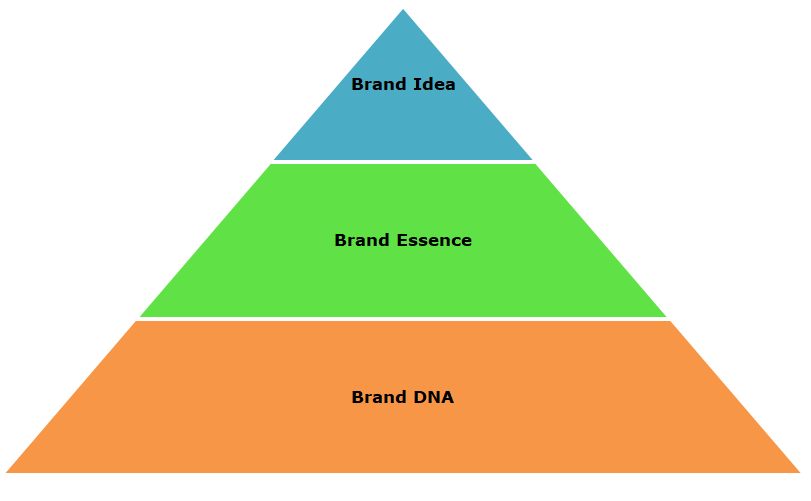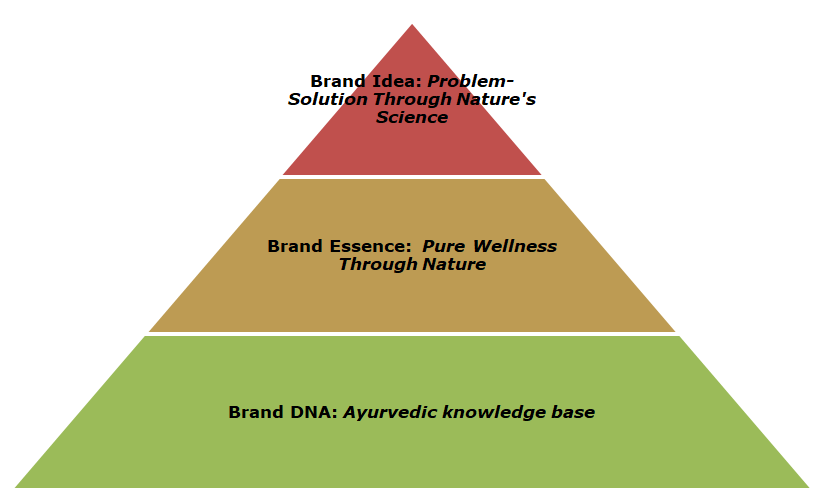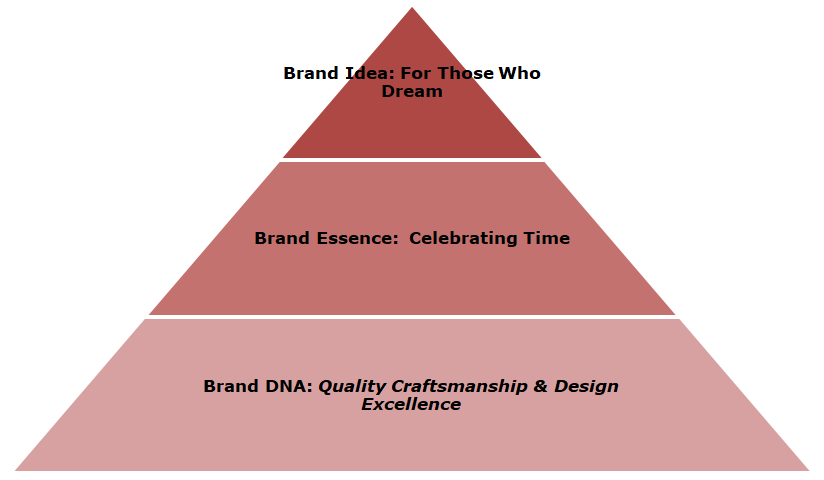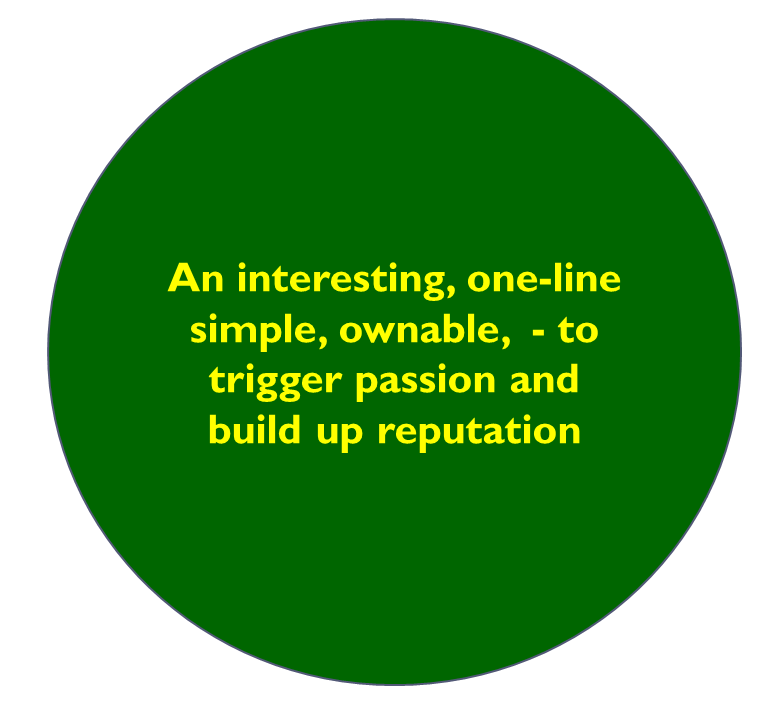Unveiling the DNA and Atma of a Brand: The Essence of a Brand Idea – Brand Management 29

Preamble
In today’s digital age, doctors are inundated with upwards of a thousand marketing messages daily, creating an unprecedented challenge for pharmaceutical communications. The critical first five to seven seconds of a doctor’s engagement with a brand represents a decisive moment that determines success or failure.
During this brief window, the brand must forge an immediate cognitive connection or risk losing the doctor’s attention permanently. One way is to craft a compelling Brand Idea.
What is a Brand Idea?
To establish a comprehensive understanding of the Brand Idea concept, let us first examine how leading lexicographical authorities define the word ‘idea’. The Oxford Dictionary characterizes it as a ‘thought’ or ‘suggestion’, while Merriam-Webster presents it as an ‘opinion’. The Cambridge Dictionary offers a dual interpretation, defining it as both a ‘proposition’ and a ‘plan’.
A Brand Idea must transcend and synthesize all these definitions, emerging as a powerful confluence of strategic thought, innovative suggestion, and actionable planning.
It serves as the foundational essence—the very soul or the ‘Atma’, of the brand, embodying its core values, mission, and purpose.
The Brand Idea acts as the guardian and architect of the brand’s reputation, shaping public perception and driving market positioning.
In today’s hyper-competitive marketplace, a well-crafted Brand Idea becomes the compass that guides all brand communications, customer experiences, and strategic decisions, ultimately determining the brand’s trajectory and success.
To succeed, pharmaceutical brands must not only capture the doctors intellectual curiosity but also present a compelling scientific narrative that drives both information-seeking behavior and prescribing decisions.
This delicate balance between initial impact and sustained engagement has become the cornerstone of effective medico-marketing in an increasingly competitive landscape.
Now let’s delve into this and see how you can craft a compelling Brand Idea. But before that let’s understand what is DNA
What is human DNA? Human DNA is like an instruction manual that contains all the information needed to build and run your body.
Think of it as a very long recipe book written in a special code! This code tells your body:
- How tall you’ll grow.
- What color your eyes and hair will be.
- How your body should work.
- And many other features that make you unique.
Some key points about human DNA:
1. Location: DNA is found in almost every cell in your body, mainly in a part called the nucleus (like the cell’s control center).
2. Structure: DNA looks like a twisted ladder (scientists call this a double helix). The sides of the ladder are made of sugar and phosphate molecules, while the steps are made of four chemical letters: A, T, C, and G.
3. Size: If you could stretch out the entire DNA from just one of your cells, it would be about 2 meters long! But it’s packed very tightly in your cells.
4. Inheritance: You get half your DNA from your mother and half from your father. This is why you might have your mom’s eyes but your dad’s hair color.
5. Function: DNA works like a set of instructions that tells your cells how to make proteins, which are essential for your body to work properly.
THE ORIGIN OF DNA
From a scientific perspective, researchers have several theories about how DNA first emerged on Earth around 4 billion years ago.
Some think it started with simpler molecules that gradually became more complex. Others suggest that RNA (a chemical cousin of DNA) came first. Some propose that the basic building blocks may have arrived from space on meteors.
Scientists are still studying and debating exactly how it happened.
However, many people view DNA’s origin through their religious or spiritual beliefs.
Some see DNA’s complex and precise structure as evidence of divine creation. Many believe God created DNA as part of life’s blueprint. Some view scientific explanations and divine creation as compatible, believing God worked through natural processes. Different religions and cultures have varying perspectives on how the divine influenced DNA’s creation.
Since this question involves personal faith and beliefs, rather than tell you what to think, I’d encourage you to learn about both the scientific research and your own faith traditions. Consider how these different viewpoints might relate to each other. Form your own understanding based on your beliefs and values
Thank you, NATIONAL HUMAN GENOME RESEARCH INSTITUTE (NHGRI) for providing this valuable information! You may visit https://www.genome.gov for more information.
Just as we have a DNA your brand too has a DNA.
When you talk about a brand’s DNA, you are using DNA as a metaphor – similar to how human DNA defines who you are; a brand’s DNA defines what makes your brand unique and special.
Let me explain with simple examples.
For a Pharmaceutical Brand these could be:
Core Values: Like being trustworthy and scientifically advanced (Like Januvia and Janumet)
- Personality: Could be caring and professional (Himalaya Baby Care Range).
- Promise: For example, “We put patients first” (like Novo Nordisk).
- Heritage: Their history of developing medicines (Dr. Reddy’s Laboratories).
- Behavior: How they interact with doctors and patients (The Cipla respiratory range of products).
For an FMCG or other Consumer Brands it may be:
- Core Values: Could be integrity towards external customers and care for employees (like the Tata Group).
- Personality: Maybe fun and energetic, or gentle and nurturing (like Amul Butter).
- Promise: Such as “Clean and fresh breath every day” (like Close-Up toothpaste).
- Look and Feel: Their consistent colors, logo, packaging (like Dove soap = ¼ moisturizer)
- Communication Style: How they talk to customers (like Indriya, jewellery from Aditya Birla).
Just like human DNA, it’s unique to each brand and stays consistent over time. It influences everything the brand does and gets passed down as the brand grows. It helps people recognize and trust the brand.
A good example would be a company like Hindustan Unilever: Their DNA includes “caring for its consumers”. This shows in their gentle products like Dove. Their communication is always warm and trustworthy. Their packaging is consistently recognizable. This DNA has guided HUL them for close to 150 years
Do Brand Idea; Brand Essence; Brand DNA mean the same?
While these terms are closely related in brand strategy, they have distinct meanings and purposes.
Brand DNA is the foundational genetic code of a brand – its core values and characteristics are the fundamental building blocks that make it unique and authentic. It includes the brand’s heritage, values, beliefs, and personality that remain constant over time.
Brand Essence is the heart and soul of the brand distilled into its simplest form – typically expressed in 2-3 words. It’s the most concentrated expression of what the brand stands for at its core. For example, for ‘Brand Raj Kapoor’, brand essence might be “Magical Entertainment” or for ‘Brand Thums Up’, might be “Thunderous Achievement.”
Brand Idea (sometimes called Big Idea) is the central creative concept that brings the brand’s essence and DNA to life through communication and experiences. Brand Idea is more action-oriented and serves as a platform for campaigns and creative execution.
To illustrate the relationship, while Brand DNA provides the foundational elements, Brand Essence distils these elements into their purest form. Now Brand Idea translates this essence into an actionable creative platform.
The Brand Idea is the core message or the big idea that a brand communicates to its audience. It’s a simple, overarching concept that encapsulates what the brand stands for and what it promises to deliver. The Brand Idea typically guides all marketing communications.
So, while they are interconnected, each plays a specific role in shaping how a brand is perceived and operates.
Let me illustrate this with Himalaya Drug Company.
Brand DNA of Himalaya Drug Company:
– Ayurveda knowledge base
– Research-backed natural solutions
– Commitment to wellness
– Environmental responsibility
– Making traditional medicine contemporary
– Trust built over generations
Brand Essence of Himalaya Drug Company:
“Pure Wellness Through Nature”
Brand Idea of Himalaya Drug Company:
Problem-Solution Through Nature’s Science. This manifests in:
-Product formulations combining the ancient wisdom of herbs in our scriptures with modern scientific validation
-Educational marketing and content marketing about natural ingredients
-Clinical evidence-based communication
-Focus on specific health solutions
-Modern retail presence, including e-commerce, with traditional roots
Another comprehensive example is Titan, a consumer goods company manufacturing and marketing watches. :
Brand DNA of Titan:
-Quality craftsmanship
-Design excellence
-Innovation in tradition
-Customer trust
-Tata group values
Indian pride
Brand Essence of Titan:
“Celebrating Time”
Brand Idea of Titan:
“For Those Who Dream”, which is executed through
-Aspirational advertising
-Premium retail experience
-Design-led collections.
-The communication strategy celebration of life moments through a mix of traditional and contemporary designs
Brands from India tell you fascinating stories of innovation, social commitment, and global ambition.
See these three pyramids

Himalaya Drug Company

Titan Watches

Brand Idea Apparatus has Three Parts
The Brand ‘Atma’
This represents the internal soul of your brand the ‘Atma’ of your brand. . It’s the vision you, as the brand manager, and your team have for the brand. It’s the grand dream, the aspiration you want your brand to embody.
Brand Reputation
This is the external perception of your brand. It’s how doctors and patients view your brand. It is the reality.
Brand Idea
The Brand Idea acts as a bridge between your internal vision and the external perception. It ensures that your brand’s actions align with your aspirations and resonate with your audience.
Brand idea is adopted from psychology.
- Id
- Super-ego
- Ego
What is this? Imagine your mind is a playground with three kids:
- The Id: The youngest, impulsive kid who only wants what it wants, right now. It’s your instincts and desires, like wanting to eat a whole cake or scream when you’re angry.
- The Super-ego: The oldest, the moral compass. It knows the rules, the right and wrong, and tries to make the other two behave. It’s your conscience, telling you what’s good and bad.
- The Ego: The middle child, the sensible one. It tries to balance the Id’s demands with the rules of the playground (society). It decides what’s realistic and safe.
A healthy mind keeps these three in balance. Too much Id and you’re impulsive and selfish. Too much Super-ego and you’re rigid and guilt-ridden. A robust Ego helps you navigate the world, finding ways to satisfy your desires without breaking the rules.

Having said this, let us explore the intricate relationship between psychology and Brand Idea.
You aspire for your brand, Brandex, to be recognized as a superior brand, driven by your strategic brilliance and exceptional communication materials. Your brand’s inner voice, the Brand Atma, exudes confidence, proclaiming Brandex as a miracle drug, unmatched by any competitor.
However, the external reality, the Brand Reputation, challenges this aspiration. It reminds you that the market is a competitive landscape, and doctors and patients are discerning consumers. They won’t be swayed by mere boasts and exaggerated claims.
The Brand Idea, the harmonizer, the stabilizer, steps in to bridge the gap between the ideal and the real. It suggests a more nuanced approach, one that prioritizes patient-centric initiatives. By focusing on humanizing the brand, such as establishing patient support groups or embracing a philosophy of “Humanism in Marketing,” Brandex can foster deeper connections with its audience and build a truly enduring reputation.

To summarize:




A Brand Idea serves as the foundation stone of a robust brand because it represents the core purpose and meaning that drives everything the brand does and stands for. It’s the central organizing principle that shapes the brand’s identity, values, behavior, and communication.
Think of it as the brand’s DNA – a unique combination that differentiates it from competitors and resonates with its target audience. A well-crafted Brand Idea provides clarity and consistency across all touchpoints, from product development to customer service, marketing communications to employee behavior.
For example, Nike’s Brand Idea of “Just Do It” goes beyond being just a tagline – it embodies empowerment, determination, and athletic achievement. This idea influences their product innovation, advertising, store design, and even their corporate culture.
Let’s take Tata Group’s Brand Idea which is built around “Leadership with Trust.” This core idea has been the foundation of the Tata brand for close to 150 years and influences how they operate across their diverse portfolio – from steel to software, from tea to automobiles.
This Brand Idea is deeply rooted in Indian cultural values while having universal appeal. It manifests in their consistent focus on ethical business practices, community development, and long-term value creation over short-term profits. For instance, during national crises, Tata often steps up with support, reinforcing their trusted leadership position.
The Brand Idea influences their business decisions – like converting the iconic Taj Hotels into hospitals during the pandemic times, launching affordable products like Tata Nano, or their commitment to environmental sustainability. It also shapes their communication style, which tends to be understated yet confident, focusing on reliability and social impact rather than flashy marketing.
This example shows how a Brand Idea can effectively guide a conglomerate while remaining culturally relevant and authentic to its origins.
A strong Brand Idea also creates emotional connections with customers, making the brand more memorable and meaningful in their lives. It guides decision-making, ensures coherent brand expression, and helps maintain relevance even as markets evolve.
Sir, your eloquently emphasizes the importance of a strong Brand Idea, comparing it to the Atma, or soul, of a brand. Just as a human’s Atma encompasses unique attributes, a brand’s core essence and values should be deeply ingrained in every aspect of its operations. The Brand Idea acts as a compass, guiding everything from marketing messages to internal culture, ensuring consistency and coherence across all channels. This clarity attracts a target audience, fostering emotional connections, loyalty, and trust. In a crowded market, a well-defined Brand Idea not only differentiates the brand but also drives long-term success by consistently delivering on its promises and reinforcing its unique identity.
Thank you so much Subhasis!
According to the Indian philosophy, the Atma is your eternal, inner self, the essence that transcends the body and mind. It’s the unchanging observer behind your thoughts and experiences.
So is your brands’ Atma.
Thanks once again for taking time out and commenting on this blog